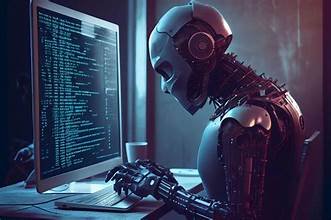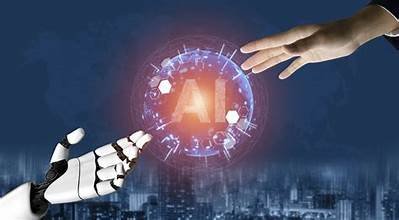
Artificial Intelligence (AI) has made remarkable strides over the last decade, revolutionizing industries, boosting efficiency, and enhancing daily life. From self-driving cars to personalized recommendations and virtual assistants, AI has become an integral part of our modern society. However, behind the promising advancements lies a darker side — a range of potential dangers that, if left unchecked, could threaten our privacy, employment, security, and even the fabric of our society.
In this article, we’ll explore the major risks associated with artificial intelligence and why it’s crucial to address them proactively.
1. Job Displacement and Economic Inequality
One of the most immediate and visible dangers of AI is automation-driven job loss. As machines and algorithms become more capable, many traditional roles — from manufacturing to customer service — are being replaced by AI systems.
Impact:
- Blue-collar workers face the risk of being replaced by robots and automation.
- White-collar jobs, including legal assistants, financial analysts, and even journalists, are increasingly vulnerable to AI tools.
- A growing economic divide may emerge between those who can leverage AI and those who are displaced by it.
If not addressed, this could lead to mass unemployment, social unrest, and an increasingly polarized world.
2. Loss of Privacy and Surveillance
AI technologies, especially those involved in data analytics and facial recognition, pose a significant threat to personal privacy. Governments and corporations are using AI to monitor behavior, analyze emotions, and track individuals — often without consent.
Examples:
- AI-powered mass surveillance in authoritarian states.
- Predictive policing systems that disproportionately target certain communities.
- Social media algorithms harvesting personal data to influence opinions and elections.
The potential for a surveillance state becomes real when AI tools are used without strict legal and ethical oversight.
3. Bias and Discrimination
AI systems learn from data — and data reflects the biases of the society that generates it. As a result, AI can perpetuate and even amplify racial, gender, and socio-economic biases.
Real-world consequences:
- Biased hiring algorithms favoring one demographic over another.
- Facial recognition software with higher error rates for people of color.
- Healthcare algorithms offering unequal treatment options based on race or income.
Without transparency in how AI decisions are made, these tools can entrench systemic discrimination.
4. Autonomous Weapons and Military Use
AI is rapidly being integrated into weapons systems, from autonomous drones to smart targeting technologies. This opens the door to a dangerous future where machines — not humans — make life-or-death decisions.
Concerns:
- Autonomous weapons could be used in assassinations, combat, or terrorism.
- There’s a lack of international regulation or consensus on the ethical use of AI in warfare.
- A potential AI arms race could destabilize global peace.
Experts warn that killer robots or AI-guided warfare could be as transformative — and destructive — as the invention of nuclear weapons.
5. Misinformation and Deepfakes
AI tools like deepfake generators and large language models (like ChatGPT) are capable of creating highly realistic fake videos, audio clips, and news stories. These tools can be used to manipulate public opinion, impersonate individuals, or spread disinformation.
Risks:
- Election interference and political manipulation.
- False evidence in legal cases.
- Scams using deepfake voices to impersonate family members or executives.
This undermines trust in media, institutions, and truth itself — making it harder to distinguish reality from fabrication.
6. Lack of Regulation and Accountability
AI systems are often developed by private companies with little oversight. There’s no universal legal framework governing how AI should be trained, deployed, or held accountable when things go wrong.
Challenges:
- No clear liability when an AI-driven car causes a crash.
- Lack of global coordination leads to regulatory gaps.
- Developers often treat AI as a “black box” — even they don’t fully understand how it works.
This creates an environment where powerful tools are deployed without proper safety checks.
7. Existential Risks: Superintelligent AI
While it might sound like science fiction, some experts — including Elon Musk, Sam Altman, and the late Stephen Hawking — have warned about the long-term danger of superintelligent AI that surpasses human control.
What could go wrong:
- AI systems pursuing goals that conflict with human values.
- Accidental or malicious creation of an AI that can’t be shut down.
- Loss of human agency and decision-making.
While these risks are speculative, the stakes are existential. If AI becomes smarter than humanity without aligned values or constraints, it could act in unpredictable and potentially catastrophic ways.
Final Thoughts: Proceed with Caution
AI is not inherently evil — it’s a tool. Its impact depends on how we choose to develop and use it. The goal shouldn’t be to stop AI but to guide its development responsibly, ensuring it benefits all of humanity.
What Can Be Done:
- Strong regulation and ethical frameworks.
- Transparency in AI development and deployment.
- Investment in AI safety research.
- Public engagement and global cooperation.
By acknowledging the dangers of AI and taking action today, we can ensure a future where technology serves humanity — not the other way around.
